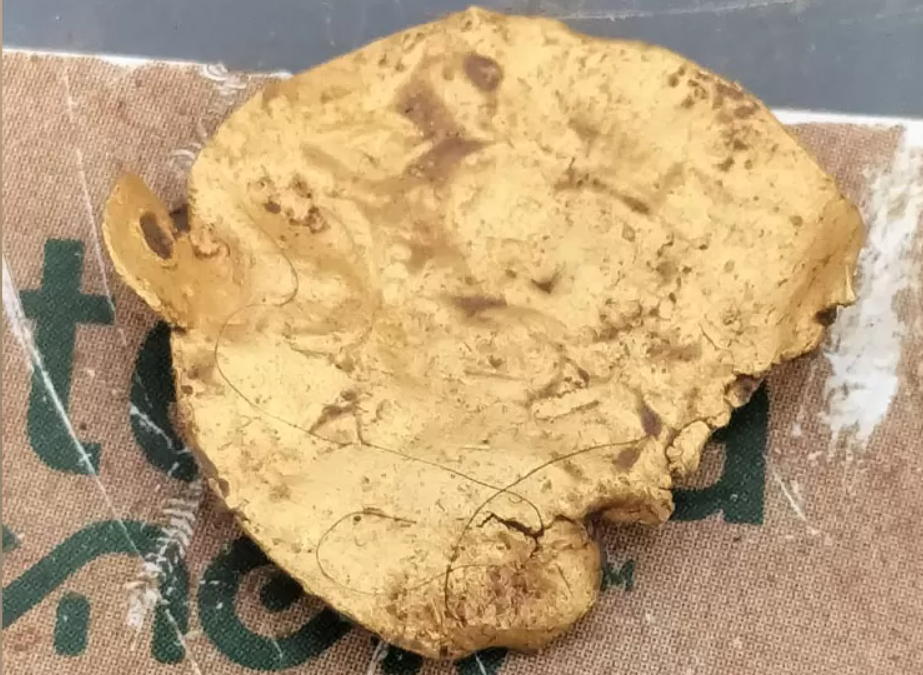Went looking for Christmas and discovered a Roman gold earring that recategorises previous finds
Categories: Nálezy nejenom s detektorem ve Velké Británii a Irsku
Fifty-three-year-old detectorist Nick Bateman, from Burston in Norfolk, discovered a gold Roman earring in the shape of a double disc last Christmas Eve. It was declared a treasure last week and will be displayed in a museum. It changes the existing view of similarly made artefacts and places them from the early medieval to the earlier Roman period.
Mr Bateman found the earring on Christmas Day 2021: "I'd arranged all the Christmas stuff, so I thought I'd go out for an hour or two," he said, describing the moments of the find. "It wasn't the best signal in the world. I dug down about 7 to 10 inches and saw what I thought was the metal top of a bottle, but when I cleaned off the mud, I realized I had ourfound gold and fell to my knees in disbelief," he said, adding that he reported the find to officials from the Norfolk Historic Environment Service.
The earring is a slightly stretched 20.5mm x 22.1 diameter and weighs 2.5 grams. It was made from two gold leaf pieces of different thicknesses soldered together. Both sides are decorated with relief by repoussé (beating from the inside) technique. The earring probably depicts an eagle surrounded by a wreath and a crescent moon, with a cross between its points. It is no longer visible on the other side, but it must have been there originally as the decoration is the same on both sides. The jewel originally had two eyelets - one for hanging the hook on the ear and the other for hanging a decorative object, which is now missing.
There are no analogies in the archaeological record. A similar find could be a disc with two thin gold plates joined together and decorated with a repoussé relief also from Norfolk. However, it bears no decoration, nor does it have an eyelet for attachment. It has only a few apparently similar features in common with Anglo-Saxon bractate pendants and has therefore been placed in this period and the 'unknown' category. The earring's more recent discovery has now led to its unknown predecessor being newly dated to the Roman period (AD 43-409). AD) and other similar finds will also be reassessed.
"My colleague thought it was medieval because he saw a small cross under one of the loops," said numismatist Adrian Marsden. "But when I looked closer, I saw a laurel wreath and an eagle, and that's exactly what you find on Roman objects. Other artefacts similar to this were thought to be medieval, which shows you have to be careful when examining these things," he added.
Mr Bateman said the field has since yielded a variety of artefacts which are currently being assessed through the hoard approval process: "Every time I look at a piece of jewellery I wonder what the Roman woman's life was like, what she looked like and how she cameshe lost the earring in a field in Norfolk," concluded the searcher, who began his detector search during the 2020 pandemic. His friend and detectorist "mentor" Joe Edwards tells Gill with a laugh that he has long since surpassed him - he's had one find declared a treasure in ten years, and Nick has had five in a few months...
Roman Nemec
Sources: dissmuseum.co.uk, norfollk.gov.uk, bbc.com

A gold earring from the Roman period

He danced the golden dance with his dog Badger at home 3 hours after the find

Inseparable partners - metal detector and border collie Badger, who accompany Nick on every walk

Nick Bateman
The article is included in categories: